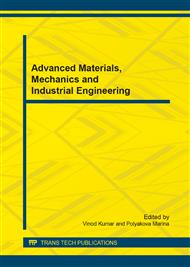p.546
p.551
p.557
p.562
p.568
p.574
p.578
p.583
p.587
Base on Real Time Temperature Monitoring and Sprinkler Cooling Control to Achieve Energy Conservation of Air-Conditioning Systems
Abstract:
If the air conditioning usage situation cannot be effectively improved, the energy consumption process will be accelerated, exacerbating the energy crisis. Despite scientists’ efforts to find alternative energy sources to solve the energy crisis, the most immediate solution is to reduce energy consumption.In this study, the energy-conservation system was designed by setting up several temperature sensors, transfer modules, and water sprinklers on rooftops and external walls that were exposed to the most sunlight; the temperature sensor modules regularly measured the roof temperature and used radio frequency (RF) technology to transfer the temperature data to the indoor receiving set. The measured temperatures were then compared with the indoor temperatures, after which the monitor program analysed and sent commands to control and activate the water sprinkler system. This allowed timely sprinkling using the proper water amount to lower the surface temperature of the roofs and external walls, which also slightly reduces the indoor temperature, achieving energy-conservation objective. Actual examples were then used to investigate the energy-saving effectiveness of the proposed system.
Info:
Periodical:
Pages:
568-573
Citation:
Online since:
July 2014
Authors:
Price:
Сopyright:
© 2014 Trans Tech Publications Ltd. All Rights Reserved
Share:
Citation:


